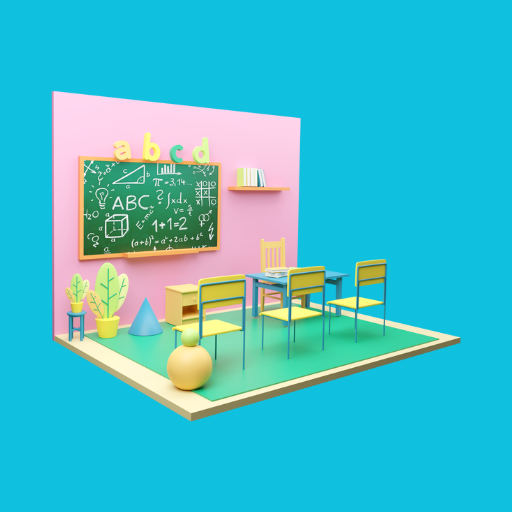Each student possesses a unique character and way of engaging with the world, which inevitably translates into their classroom behaviors. As educators, comprehending the various student personas can make instruction more efficient, productive, and rewarding. There’s a rich tapestry of student attitudes and behaviors one might encounter, and the strategies used to engage them should be equally diverse. This discussion will delve into five stereotypical student personas often found in classrooms, offering evidence-based approaches for dealing with each one. This categorization is centered on behavioral tendencies rather than factors like learning style, age, etc.

1. Backbenchers
The term ‘backbencher’ typically refers to students who prefer to sit in the back rows of the classroom, often drawing unwarranted suspicion from teachers. These students might be seen sleeping, listening to music, watching videos, or engaging in idle chatter during class time. However, it is crucial not to hastily label them as “uninterested” or “unruly”.
To better engage with backbenchers, it is suggested that teachers adopt a dynamic classroom presence, circulating the room during discussions to ensure that all students are given equal attention (Hill & Flynn, 2006). This strategy, termed ‘proximity control,’ has been empirically shown to increase on-task behavior while decreasing disruptive actions (Gunter, Hummel, & Conroy, 1998).
2. Overachievers
Overachievers are students who exhibit extraordinary enthusiasm in every task. They’re the ones who actively participate in every discussion, overperform in activities, and often join numerous clubs. However, their high-profile presence can sometimes overshadow others, leading to a decrease in class-wide participation.
Academic experts like Hany (1993) suggest that educators should approach overachievers through direct communication. These students may not even be aware of the unintentional side effects of their behavior. A gentle, diplomatic discussion might encourage them to foster a more balanced class dynamic.
3. Slackers
On the opposite end of the spectrum, we find ‘slackers’ – students who often don’t respond to roll calls, arrive late, or only show up for tests and exams. They’re frequently viewed as problematic groupmates for projects.
Understanding the root cause of their behavior is critical. Researchers like Finn (1989) argue that slacking off could be a sign of underlying issues, including familial problems, learning disabilities, or mental health concerns. When such issues are suspected, it may be prudent to recommend them to school counseling or psychological services for additional support.
4. Shy Ones
Shy students are often punctual and regular in attendance but may not participate actively in class activities. They tend to stay within their comfort zones, speaking infrequently, and appear hesitant to share their thoughts openly.
Helping shy students open up may require a patient, gradual approach. Gillies (2008) suggests that using humor can establish a relaxed classroom environment, which can help shy students feel comfortable. Providing positive reinforcement targeting their good performance can help boost their confidence (Hattie & Timperley, 2007). Such feedback may reduce anxiety and eventually inspire more active participation.
5. Class Clowns
Class clowns can bring a sense of levity to even the most serious classroom atmospheres with their jokes and antics. However, these comedic interjections can sometimes disrupt the flow of learning, causing distraction among peers.
Responding to class clowns requires a careful, strategic approach. Rather than reacting in frustration or anger, educators could help the student understand that their behavior, although entertaining, may not always be appropriate in the classroom context (Ruch et al., 2014). Offering alternatives for using their humor constructively can redirect this energy while maintaining classroom decorum.
It is important to remember that students are not bound by these categories. They are nuanced individuals whose behaviors can be influenced by a multitude of factors. Understanding these personas provides a stepping stone to crafting individualized educational strategies that cater to each student’s unique needs and characteristics.
References:
- Finn, J. D. (1989). Withdrawing from school. Review of Educational Research, 59(2), 117-142.
- Gillies, R. M. (2008). The effects of cooperative learning on junior high school students during small group learning. Learning and Instruction, 18(4), 389-402.
- Gunter, P., Hummel, J., & Conroy, M. (1998). Decreasing disruptive behaviors in students with autism: An observational study in an inclusive classroom setting. Journal of Positive Behavior Interventions, 1(1), 66-74.
- Hany, E. A. (1993). Reflections on the over-achiever: Psychological and pedagogical considerations. Gifted Education International, 9(2), 101-112.
- Hattie, J., & Timperley, H. (2007). The power of feedback. Review of Educational Research, 77(1), 81-112.
- Hill, M., & Flynn, K. (2006). Classroom instruction that works with English language learners. ASCD.
- Ruch, W., Platt, T., & Hofmann, J. (2014). The character strengths of class clowns. Frontiers in Psychology, 5, 1075.


